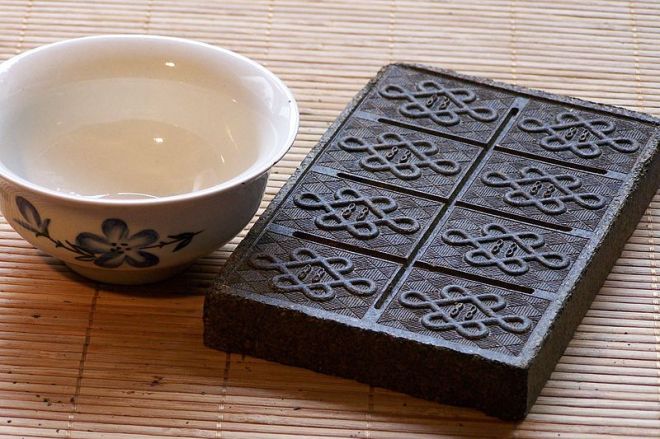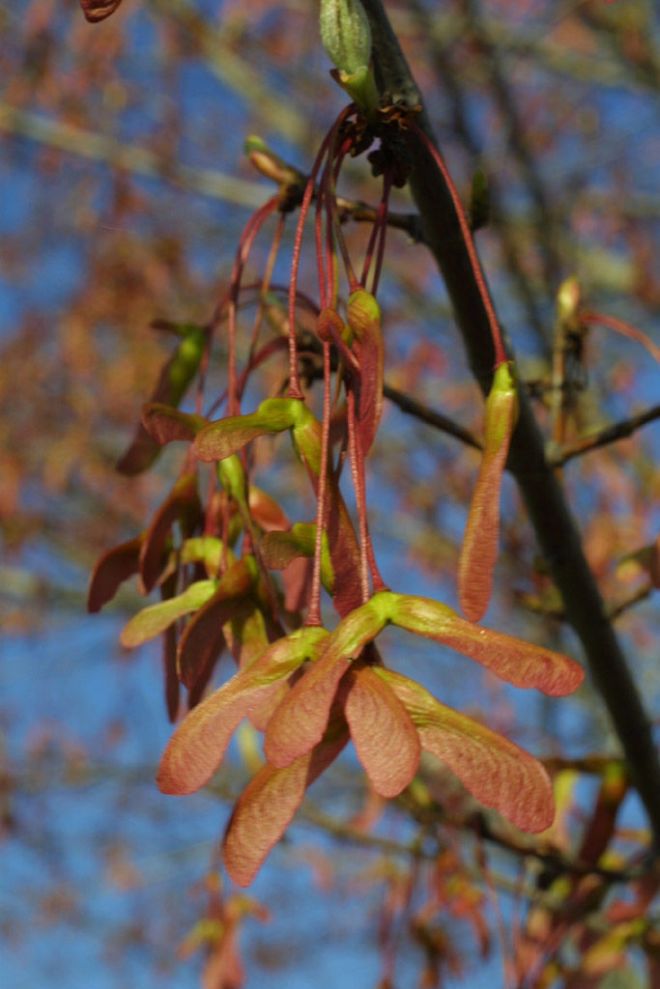I was once a teenage paper carrier in small town Idaho. One of my stops was an apartment complex, and for much of the year, this was an uneventful stop. But for a few weeks in the summer, the purple-leaved plum trees out front had ripe fruit on them, and each time I was there, I would stop and take a few. In general, I don’t get that excited about fruit, but I enjoyed eating these plums. This variety of plum is typically planted for its looks rather than its fruit, and it may even be the tree that recently received a pitifully low score on an episode of Completely Arbortrary. Ornamental plum or not – and low cone score or not – I thought the fruit was good.
Many of the things we eat are a result of crosses between two related species, and plums are a great example of this. Species are species because they are reproductively isolated. A species does not typically mate with a member of another species and create viable offspring, except this happens all the time both naturally and artificially. In many cases, the offspring isn’t actually viable, but there is offspring nonetheless, and in the case of plants, that offspring can then reproduce asexually – by leaf, stem, or root cuttings or by some other means – and the resulting hybrid can exist indefinitely. One species mating with another species (specifically two species that are members of the same genus) is called interspecific hybridization, and there is a good chance that you’ve eaten something recently that is a result of this.
One of the most widely grown species of plum, Prunus domestica (commonly known as European plum), is a result of interspecific hybridization that occurred many centuries ago. A paper published in Horticulture Research (2019) confirmed that P. domestica originated as a cross between Prunus cerasifera and Prunus spinosa, the latter of which may have also been a result of interspecific hybridization. There are over 400 species in the genus Prunus that are distributed across temperate regions in the northern hemisphere. Within this genus is the subgenus Prunus (or Prunophora), a group that includes dozens of familiar species such as the plums, apricots, peaches, and almonds. Due to their close relationship, both natural and artificial hybridization among members of this subgenus is common, which explains the origin of Prunus domestica, as well as the majority of the plums we grow today.
Current commercial production of plums in North America is largely thanks to work done by Luther Burbank in the late 19th to early 20th centuries. Burbank was obsessed with plant breeding and released hundreds of new varieties of all kinds of different plants during his decades long career. He seemed particularly interested in plums, developing 113 different cultivars, which account for more than half of all his fruit releases. Probably his most well known plum variety is ‘Santa Rosa,’ which thanks to modern day genetics has been determined to be a cross between at least four different species of plum.
Early colonizers to the American continent were mainly growing varieties of the European plum they had brought over from Europe. North America is also home to several species of plums, which are used by indigenous populations. Shortly before Burbank began working with plums on his farm in California in 1881, Asian plum species were imported to the U.S., and breeders began using them in crosses with both European and North American plum species. Burbank became particularly engulfed in these efforts. In an article published in HortScience (2015), David Karp writes, “In the history of horticulture it is rare to find an individual who almost single-handedly created a new commercial industry based on a novel fruit type as Luther Burbank did for Asian-type plums in the United States.” Most Asian-type plums sold in stores today are hybrids of several different plum species due to the numerous complex crosses that Burbank made.
Burbank is also said to be the first to cross plums and apricots, creating the first of many cultivars of the plumcot. Plum and apricot crosses didn’t really catch on for a few more decades, and when they did, it was thanks to the work of Floyd Zaiger of Zaiger Genetics who developed and released numerous varieties. Apriums and Pluots are Zaiger Genetics trademarks, along with a few other unlikely crosses with plums and their related counterparts.

A plumcot is the simplest cross. It is said to be 50% Asian plum (Prunus salicina) and 50% apricot (Prunus armeniaca). However, due to all the breeding of Asian plums carried out by Burbank and others, the Asian plum involved in the cross is typically a hybrid with other plum species, as discussed in a recent paper published in Plants (2022). An aprium is the result of a cross between a plumcot and an apricot, making it 75% apricot and 25% plum, while a pluot is a cross between a plumcot and a plum, making it 75% plum and 25% apricot. There is typically much more that goes into making these crosses, but that’s the general idea. If you’re lucky, you can find all three of these intraspecific crosses in a produce section near you, but it may not be clear what cultivar you’re purchasing. Myriad cultivars have been released of each of these hybrids – each one varying in color, size, flavor, disease resistance, etc. – and unfortunately most grocery stores don’t include cultivar names on their products, so it’s difficult to know what you’re getting.
At Awkward Botany Headquarters, there is a plum tree growing in our front yard. We didn’t plant it, so at this point I have no idea what species or cultivar it is. The plums are delicious though, and the leaves aren’t purple like the plums I used to eat on my paper route. Considering all of the intraspecific crossing that has gone on with plums, it’s quite likely that it is a combination of different species, which isn’t going to make it easy to figure out. But I’ll do my best.
Check out the linktree for various ways to follow and support Awkward Botany.











